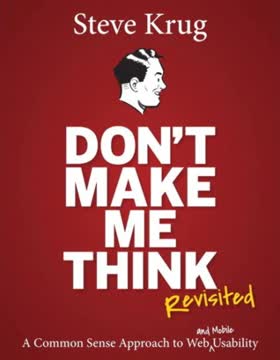Key Takeaways
1. Social tools enable unprecedented group formation and action
"Our social tools are not an improvement to modern society; they are a challenge to it."
Technological revolution. The rise of social tools represents a fundamental shift in human communication and coordination capabilities. These tools dramatically lower the costs of group formation, allowing people to easily connect, share information, and take collective action on a scale previously unimaginable.
Real-world impact. This newfound ability to rapidly form and mobilize groups has far-reaching consequences across society:
- Political activism: Flash mobs in Belarus challenging authoritarian rule
- Consumer advocacy: Airline passengers organizing for better treatment
- Disaster response: Rapid information sharing during crises like earthquakes
- Cultural production: Collaborative projects like Wikipedia and open-source software
The power of these tools lies not just in connecting individuals, but in enabling entirely new forms of group organization and action that bypass traditional institutional structures.
2. Mass amateurization challenges traditional institutional gatekeepers
"When we call something intuitive, we often mean familiar."
Democratization of production. The internet and social media have dramatically lowered barriers to entry for content creation and distribution. This "mass amateurization" challenges the role of traditional gatekeepers in fields like journalism, photography, and publishing.
Shifting power dynamics. Key impacts of this shift include:
- Blurring lines between professionals and amateurs
- Increased diversity of voices and perspectives
- Challenges to established business models
- New criteria for assessing quality and credibility
While this democratization brings benefits of increased participation and innovation, it also raises concerns about the loss of professional standards and the spread of misinformation. The challenge lies in finding new ways to harness the potential of mass participation while maintaining necessary quality controls and ethical standards.
3. Publish-then-filter replaces filter-then-publish as the new norm
"Any effort at creating group value can be successful without some form of governance."
Information overload. The traditional model of carefully filtering content before publication is being replaced by a "publish-then-filter" approach in the digital age. This shift is driven by the drastically reduced costs of publishing and the vast increase in the volume of information being produced.
New filtering mechanisms. To cope with this information deluge, new filtering methods are emerging:
- Collaborative filtering (e.g., user ratings, recommendations)
- Algorithmic curation (e.g., search engines, social media feeds)
- Social proof (e.g., likes, shares, retweets)
- Reputation systems (e.g., user reviews, follower counts)
These new filtering mechanisms often rely on collective intelligence and network effects, rather than centralized editorial control. While this approach can surface valuable content that might have been overlooked in traditional systems, it also presents challenges in terms of quality control, echo chambers, and the potential for manipulation.
4. Collaborative production harnesses diverse motivations and skills
"Love has profound effects on small groups of people—it helps explain why we treat our family and friends as we do—but its scope is local and limited."
Power of intrinsic motivation. Collaborative projects like Wikipedia and open-source software demonstrate that people are willing to contribute significant time and effort to shared goals without traditional financial incentives. These projects tap into diverse motivations:
- Personal interest and passion
- Desire for recognition and status within a community
- Belief in the project's mission or values
- Opportunity to learn and develop skills
Leveraging diverse skills. Successful collaborative projects create systems that:
- Allow for varying levels of commitment and expertise
- Break down complex tasks into manageable pieces
- Provide clear guidelines and quality control mechanisms
- Foster a sense of community and shared purpose
By harnessing these intrinsic motivations and diverse skills, collaborative production can achieve results that rival or surpass traditional organizational models in certain domains.
5. Collective action faces new opportunities and challenges in the digital age
"Revolution doesn't happen when society adopts new technologies—it happens when society adopts new behaviors."
Empowering coordination. Digital tools dramatically lower the costs of organizing collective action, enabling:
- Rapid mobilization of large groups
- Decentralized decision-making and leadership
- Real-time information sharing and strategy adjustment
- Global reach and coordination
Persistent challenges. However, collective action still faces significant hurdles:
- Maintaining long-term engagement beyond initial enthusiasm
- Translating online support into real-world impact
- Overcoming free-rider problems and diffusion of responsibility
- Resisting co-optation or suppression by powerful interests
The key to effective collective action in the digital age lies in combining the power of new tools with time-tested principles of community organizing, clear goal-setting, and strategic planning.
6. Small world networks amplify information spread and group coordination
"Fame isn't an attitude, and it isn't technological artifact. Fame is simply an imbalance between inbound and outbound attention, more arrows pointing in than out."
Network structure matters. Small world networks, characterized by dense local clusters connected by a few long-range links, play a crucial role in information diffusion and group coordination. Key features include:
- High local clustering: Information spreads quickly within tight-knit groups
- Short global path lengths: Information can reach distant parts of the network relatively quickly
- Presence of hubs: Highly connected individuals act as bridges between different clusters
Implications for social dynamics:
- Rapid spread of information and ideas
- Increased potential for coordinated action
- Emergence of influencers and opinion leaders
- Potential for both positive (e.g., innovation diffusion) and negative (e.g., rumor spreading) effects
Understanding and leveraging these network structures is crucial for effectively harnessing the power of social tools for communication and coordination.
7. Lowering barriers to failure accelerates innovation and problem-solving
"Anything that increases our ability to share, coordinate, or act increases our freedom to pursue our goals in congress with one another."
Embracing failure. By dramatically reducing the costs of experimentation and failure, social tools enable a more rapid and diverse exploration of ideas and solutions. This approach:
- Encourages risk-taking and innovation
- Allows for quick iteration and improvement
- Harnesses collective intelligence to identify successful approaches
Examples of low-cost experimentation:
- Open-source software development
- Crowdsourcing platforms for problem-solving
- A/B testing in digital product design
- Rapid prototyping and lean startup methodologies
The key is creating systems that make failure cheap, fast, and learnable, allowing for rapid evolution and adaptation in response to challenges and opportunities.
8. Promise, tool, and bargain are key elements of successful social systems
"The promise is the basic 'why' for anyone to join or contribute to a group."
Three crucial components:
- Promise: The compelling reason for people to participate
- Tool: The technological means that enable and shape interaction
- Bargain: The implicit or explicit agreement about how the system will function
Balancing act. Successful social systems must align these elements:
- The promise must be achievable and motivating
- The tools must effectively support the promised activities
- The bargain must feel fair and beneficial to participants
Misalignment between these elements often leads to failure or unintended consequences. For example, a platform might promise creative freedom but implement tools that overly restrict user actions, or fail to establish a clear bargain about content ownership and moderation.
9. New social tools are transforming political activism and civic engagement
"The hallmark of revolution is that the goals of the revolutionaries cannot be contained by the institutional structure of the existing society."
Shifting power dynamics. Social media and digital tools are reshaping political activism by:
- Enabling rapid mobilization and coordination of large groups
- Bypassing traditional media gatekeepers
- Providing new channels for citizen journalism and information sharing
- Facilitating cross-border solidarity and support
Examples of impact:
- Arab Spring uprisings
- #BlackLivesMatter movement
- Climate strike campaigns
- Grassroots political fundraising
While these tools have demonstrated their power to challenge existing power structures, they also face limitations and potential backlash, including government censorship, disinformation campaigns, and the challenge of translating online activism into sustained real-world change.
10. The future of collective action lies in new legal structures for online groups
"We're about to experience a revolution in collective action, and the driver of that revolution will be new legal structures that will support productive collective action."
Beyond protest. While social tools have excelled at enabling protest and negative collective action (stopping things), the next frontier lies in facilitating positive collective action (creating things). This requires new legal and organizational structures that can:
- Provide formal recognition and legal standing to online groups
- Enable collective decision-making and resource allocation
- Ensure accountability and resolve disputes
- Protect shared resources and intellectual property
Emerging models:
- Virtual corporations
- Decentralized autonomous organizations (DAOs)
- Platform cooperatives
- Digital commons licensing frameworks
By developing these new structures, we can unlock the full potential of social tools to not just coordinate protest, but to collaboratively build and sustain new institutions and solutions to complex societal challenges.
Last updated:
FAQ
What's Here Comes Everybody about?
- Focus on social tools: The book examines how social media and mobile communication enable group organization without traditional structures, shifting from individualistic to collaborative efforts.
- Case studies and examples: It uses real-world examples, like Wikipedia and social media's role in crises, to show how these tools change group dynamics and information sharing.
- Implications for society: Discusses broader impacts on political movements, consumer behavior, and community nature in the digital age.
Why should I read Here Comes Everybody?
- Understanding modern communication: Offers insights into how social tools have transformed communication and collaboration, essential for those interested in technology, sociology, or media studies.
- Real-world relevance: Shirky's analysis is grounded in contemporary examples, making concepts relatable and applicable to current events and personal experiences.
- Framework for future action: Provides a framework for leveraging social tools for collective action in activism, business, or community building.
What are the key takeaways of Here Comes Everybody?
- Power of collective action: Social tools enable individuals to organize and act collectively, often leading to significant social change, illustrated by examples like Belarus protests.
- Importance of social capital: Discusses social capital as networks of relationships that enable society to function effectively, highlighting how social tools can build or erode it.
- Shift from planning to spontaneity: Notes a shift from pre-planned events to spontaneous gatherings facilitated by mobile communication, making group reactions less predictable but more immediate.
What are the best quotes from Here Comes Everybody and what do they mean?
- “The power to coordinate...”: Highlights the ongoing evolution of social tools and their ability to facilitate group organization, suggesting future innovations will enhance collective action.
- “The more ubiquitous...”: Points out that as communication tools become more integrated, the need for detailed planning diminishes, allowing for more spontaneous group actions.
- “Having a handful of highly motivated...”: Reflects changing group dynamics, where social tools allow even minimally motivated individuals to contribute effectively to collective efforts.
How does Here Comes Everybody address the concept of mass amateurization?
- Definition of mass amateurization: Describes the process by which ordinary individuals gain the ability to create and share content, previously the domain of professionals.
- Impact on traditional media: Discusses how this shift has disrupted traditional media industries, leading to a more diverse range of voices and perspectives.
- Examples of success: Cites Wikipedia and blogging platforms as examples of how mass amateurization enables collective knowledge creation and sharing.
How do social tools create social capital according to Here Comes Everybody?
- Definition of social capital: Defined as networks of relationships that facilitate cooperation and collective action within a community, essential for societal functioning.
- Role of technology: Argues that social tools enhance social capital by making it easier for individuals to connect, share information, and collaborate.
- Impact on communities: Emphasizes that communities with high social capital are more resilient and effective in addressing challenges, as members support one another.
What is the significance of the Prisoners’ Dilemma in Here Comes Everybody?
- Understanding cooperation: Uses the Prisoners’ Dilemma to explain cooperation challenges in group settings, where individual interests can conflict with collective goals.
- Iterated version benefits: Discusses how repeated interactions in the iterated Prisoners’ Dilemma foster cooperation, crucial for building social capital.
- Real-world applications: Connects this framework to real-world scenarios, showing how social tools can mitigate group dilemmas, enabling effective collaboration.
What examples does Here Comes Everybody provide to illustrate the power of social tools?
- Filipino protests: Text messaging played a crucial role in organizing protests against the government, demonstrating mobile communication's power in collective action.
- American Airlines delays: Highlights the Coalition for an Airline Passengers’ Bill of Rights as an example of using social media to organize and advocate for rights.
- Flash mobs: Examines flash mobs as a phenomenon where social tools enable rapid organization and collective expression.
What role does cooperation play in the themes of Here Comes Everybody?
- Foundation of collective action: Cooperation underpins the ability of individuals to work together toward common goals, facilitated by social tools.
- Challenges to cooperation: Discusses barriers like the Tragedy of the Commons, where individual interests can undermine collective efforts.
- Examples of successful cooperation: Highlights open-source software projects as examples of how cooperation leads to innovative solutions and positive change.
How does Here Comes Everybody explain the shift from planning to spontaneity in group actions?
- Changing communication dynamics: Argues that mobile communication has shifted coordination from detailed planning to spontaneous gatherings, allowing immediate responses.
- Impact on predictability: Notes that spontaneous coordination makes group reactions less predictable, reflecting the fluid nature of modern interactions.
- Real-world implications: Connects this shift to social movements, illustrating how spontaneous organization can lead to significant social change.
What are the implications of small world networks as discussed in Here Comes Everybody?
- Definition of small world networks: Characterized by tightly connected small groups loosely connected to larger groups, allowing efficient communication.
- Role of highly connected individuals: Emphasizes "connectors" who facilitate communication across groups, bridging gaps and enabling collaboration.
- Applications in social movements: Illustrates how small world networks enhance social movements' effectiveness by enabling rapid information dissemination and coordination.
How does Here Comes Everybody illustrate the impact of social tools on political movements?
- Case studies: Uses examples like the Belarus protests to show how social tools enable rapid organization and mobilization in political contexts.
- Empowerment of individuals: Highlights how these tools empower individuals to participate in political movements without traditional organizational structures.
- Global implications: Discusses the global impact of social tools on political movements, emphasizing their role in democratizing participation and amplifying voices.
Review Summary
Here Comes Everybody explores how the internet and new communication technologies have revolutionized group formation and collective action. Shirky argues that lowered costs of social interaction have fundamentally changed society, enabling new forms of collaboration and problem-solving. While some readers found the book insightful and thought-provoking, others felt it was outdated or oversimplified. Many praised Shirky's clear writing style and use of anecdotes, though some criticized his techno-utopian perspective. Overall, the book sparked discussions about the impact of social media on modern life, despite mixed opinions on its depth and lasting relevance.
Similar Books










Download PDF
Download EPUB
.epub digital book format is ideal for reading ebooks on phones, tablets, and e-readers.




